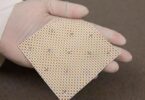[et_pb_section bb_built=”1″][et_pb_row][et_pb_column type=”1_2″][et_pb_text _builder_version=”3.13.1″]
Over time, different organizations and groups of researchers have tried to classify mental illnesses, with more or less acceptance by the scientific community.
These classifications make it possible to organize theoretical knowledge in a more easily understandable way, however there is a risk of ignoring or separating specific aspects that could be closely related.
This list is the possible classifications of the types of mental illnesses that have been carried out, and the main groupings can vary greatly depending on who performs them and sometimes controversial modifications are produced with respect to previous versions.
- Neurodevelopmental disorders
This disease is characterized by the presence of a series of deficits and difficulties in different abilities and abilities that manifest during the maturational development of the person, appearing the first symptoms during childhood.
- Spectrum disorders of schizophrenia and other psychotic disorders
This type of disease has a common symptomatology, and it is the presence of symptoms that are both positive, that is, they add or exaggerate some aspect of the normative behavior, as well as negative ones, in which the capacity of the subject is diminished and impoverished.
- Bipolar disorder and related disorders
Bipolar disorder is a type of mental illness characterized by the alternation between two opposite emotional poles, mania (or hypomania if the symptoms are minor) and depression.
- Depressive disorders
The basic characteristics of this type of mental illness are based on the presence of a state of pathological and persistent sadness accompanied by anhedonia or lack of pleasure and / or apathy.
In addition to major depressive disorder you can find other types of pathologies such as dysthymia, postpartum depression and even premenstrual syndrome.
- Anxiety disorders
The most frequent type of mental disorder, both in the consultation and in the general population, anxiety disorders can be identified due to the high level of psychophysiological activation they cause along with the presence of a high negative affect or discomfort.
- Obsessive-compulsive disorder and related
This type of disease of the OCD environment is characterized by the presence of a profile of rigid and inflexible behavior, the presence of doubts and a certain level of perfectionism. But the most distinctive and characteristic of this category is the presence of obsessions, intrusive and repetitive ideas that are recognized as their own and in general as absurd by the subject itself.
The mental disorder par excellence of this category is obsessive-compulsive disorder. Body dysmorphic disorder or trichotillomania are disorders that in the last version of the DSM have also been included in this category, although in the past they were classified as dissociative and impulse control disorder respectively. This is due to the presence of an obsessive-type thought (specifically with a body area) and the presence of a specific compulsion in the presence of anxiety (plucking the hair).
- Trauma and other disorders related to stress
This type of mental disorder is based on the experience of certain life circumstances, or the presence or absence of a specific stressor, the most characteristic of this type of psychopathology is post-traumatic stress disorder, which is especially common in people who have lived war conflicts.
- Dissociative disorders
Some vital circumstances cause the mind to react in an anomalous way, causing a dissociation of its basic mechanisms and processes, such as memory or identity.
- Disorder due to somatic symptoms and related disorders
This type of mental illness has as its main feature the presence of physical symptoms without there being any physiological cause for it, the physical symptoms being the product of one’s own mind.
- Eating disorders
Anorexia and bulimia nervosa are mental disorders that we often hear about.
- Disorders of excretion
The feeding and nutrition contribute fundamental nutrients to the organism in order that it can work correctly, but in a given moment the surplus elements have to be expelled from the body.
In the case of people with disorders of excretion, such expulsion occurs in inappropriate and uncontrolled circumstances, sometimes as a consequence of anxiety. In this aspect, eneuresis and encopresis stand out, in which urine or feces are excreted, respectively.
- Sleep-wake disorders
These problems can be due to a lack of sleep or insomnia or excess of this, or hypersomnia. In both cases, fatigue, demotivation and, in some cases, memory and attention problems are caused.
- Sexual dysfunctions
Premature ejaculation, problems of erection, anorgasmia or inhibited sexual desire are some of the disorders of this kind that are most consulted in the clinic.
- Destructive disorders of impulse and behavior control
This classification refers to the presence of a sudden impulse characterized by a high level of activation and anguish that the individual is unable or has severe difficulties to resist, due to the deep gratification and well-being that he receives with his behavior. An example is intermittent explosive disorder, kleptomania or pyromania.
- Substance use disorders and addictive disorders
In this type of disorder we find addiction, dependence, intoxication and abstinence to very different types of substances, whether stimulating, depressing or disturbing.
[/et_pb_text][/et_pb_column][et_pb_column type=”1_2″][et_pb_text _builder_version=”3.13.1″]
Neurocognitive disorders
Confusional syndromes, delirium or neurodegenerative disorders such as dementia fall within this classification.
- Paraphilic disorders
The so-called paraphilias are a type of mental illness characterized by the presence of intense and persistent fantasies in which the object of sexual desire is anomalous, generally having some compulsive fixation in those types of stimuli that interfere in life or cause discomfort.
Some disorders of this type include voyeurism, exhibitionism, sexual sadism, masochism or pedophilia.
- Personality disorders
Each of us has a personality of our own, developed throughout our lives. However, this type of mental illness involves the presence of a personality that supposes a high level of suffering to the person who has it or greatly limits its life and its participation in the world. Borderline personality disorder, antisocial personality, histrionic personality disorder, obsessive personality or avoidant personality are some of the disorders that are part of this classification.
After knowing the possible list of mental disorders and that each one has its own characteristics that distinguish them from each other and in many of the cases they have points in common, such as the etiology or symptoms, which make them grouped into specific categories, being able to perform a classification in different types, there is currently a new method for the diagnosis of mental illness developed by a researcher at Monash University that could significantly accelerate the detection of mental and neurological diseases, according to an article published in ScienceDaily.
The researcher has innovated the electrovestibulography, something similar to an ‘Electrocardiogram of the mind’. The patterns of electrical activity in the vestibular system of the brain are measured against different response patterns observed in depression, schizophrenia and other disorders of the central nervous system.
The Vestibular System is contained within the inner ear and consists of: – Vestibule: Inside the vestibule there are two structures, Utricle and Sáculo. In the utricle and saccule there is a receptor organ called Macula, which is composed of ciliated sensory receptor cells.
The vestibular system is the portion of the inner ear that regulates functions such as balance and orientation in space. When a person suffers from a pathology in the inner ear, they may experience a wide variety of problems such as vertigo, hearing loss and nausea.
The vestibular system is closely related to the original regions of the brain that relate emotions and behavior, so the researcher saw the diagnostic potential of measuring and comparing different patterns of electrovestibular activity.
Working with psychiatric researchers at the Alfred Psychiatry Research Center of Monash University (MAPrc) in Melbourne, Australia, he tested with volunteers and observed different response patterns or “biomarkers”, which distinguished different diseases of the Centarl Nervous System from each other and from the activity Normal electrovestibular.
There has been an association to develop and patent electrovestibulography or EVestG ™. It is expected that this process of simple, fast and cheap detection for diseases of the Nervous System.
The Vestibular System is contained within the inner ear and consists of: – Vestibule: Inside the vestibule there are two structures, Utricle and Sáculo. In the utricle and saccule there is a receptor organ called Macula, which is composed of ciliated sensory receptor cells.
The vestibular system is the portion of the inner ear that regulates functions such as balance and orientation in space. When a person suffers from a pathology in the inner ear, they may experience a wide variety of problems such as vertigo, hearing loss and nausea.
The vestibular system is closely related to the original regions of the brain that relate emotions and behavior, so the researcher saw the diagnostic potential of measuring and comparing different patterns of electrovestibular activity.
Working with psychiatric researchers at the Alfred Psychiatry Research Center of Monash University (MAPrc) in Melbourne, Australia, he tested with volunteers and observed different response patterns or “biomarkers”, which distinguished different diseases of the Centarl Nervous System from each other and from the activity Normal electrovestibular.
There has been an association to develop and patent electrovestibulography or EVestG ™. It is expected that this process of simple, fast and cheap detection for diseases of the Nervous System.
The disorders of the Central Nervous System cost more than 2 billion dollars worldwide and affect one person in four at some time in their life.
The new method is capturing international interest and, if the next tests match expectations, it could be incorporated into Australian and other countries’ hospitals very soon.
These and other innovations are also possible in Pharmamedic.

[/et_pb_text][/et_pb_column][/et_pb_row][/et_pb_section]









